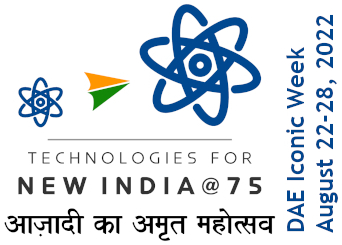Application of Surface Conjugated Metal Oxide Nano-particles to Combat Cancer
Metal oxide nanoparticles have generated a new pathway for biomedical application in the form of diagnostic approaches and therapeutic interventions, for selective destruction of tumor cells and holds potential application in drug delivery systems. Also, by appropriate choice of surface conjugation/chelation with ligands, these nanomaterials can acquire the ability to selectively target particular types of cells or to pass through physiological barriers and penetrate deep into the sites of rapidly dividing cells. In other words, such surface conjugated nanomaterials have become forefront scaffolds for designing bioactive materials.
From our SINP group (Bichitra Nandi Ganguly, Vivek Verma, Debanuj Chatterjee, Biswarup Satpati, Sushanta Debnath and Partha Saha vide: ACS Materials and Interfaces : 8, (2016), 17127- 17137 , DOI: 10.1021/acsami.6b04807), we have prepared bioactive nano materials namely: gallium oxy-hydroxide GaO(OH), also surface-conjugated GaO(OH) with a giant sugar molecule: β-cyclodextrin (CD) through a simple wet chemical route but with critical and astute physical characterization processes such that the same could be useful in bio-medical diagnostics as well as therapeutic applications.
Interestingly, aqueous chemistry of Ga (III) bears considerable resemblance with that of Fe(III) ions, because of its similar size and chemical properties. Ga (III) is however virtually irreducible under physiological conditions, that means it cannot participate in the electron transfer processes (redox processes) of the living cells. When gallium ions are mistakenly taken up by living cells, their ability to respire is interfered (as it is incapable to bind with heme), the effect is lethal.
Also Ga-68, a short lived positron emitter with 68 min half life could be suitably labeled to this compound, for diagnostic studies in positron emission tomography (PET). Conjugation of GaO(OH) with β-(CD) enhanced the water solubility of the drug so that it could be easily taken up by the malignant cells (those are rapidly dividing), and would be appropriate for the renal clearance of the same after its administration and investigation time duration in molecular imaging processes (such as in PET), which is very important.
The application of this drug for diagnostic and therapeutic processes has been tested on malignant HeLa cell line (cervical cancer cells) with success, which express transferrin receptors in plenty. The strategy of treating cancerous cells by interfering with cellular iron uptake and metabolism was further supported by showing significant cytotoxicity on the cell line (in-vitro) that ultimately leads to programmed cell death. As is observed in the figure: the entry of spindle shaped GaO(OH) –CD NPs distributed throughout the cells at a certain concentration, shows a total lethal effect on the cell line after 72 hours.




